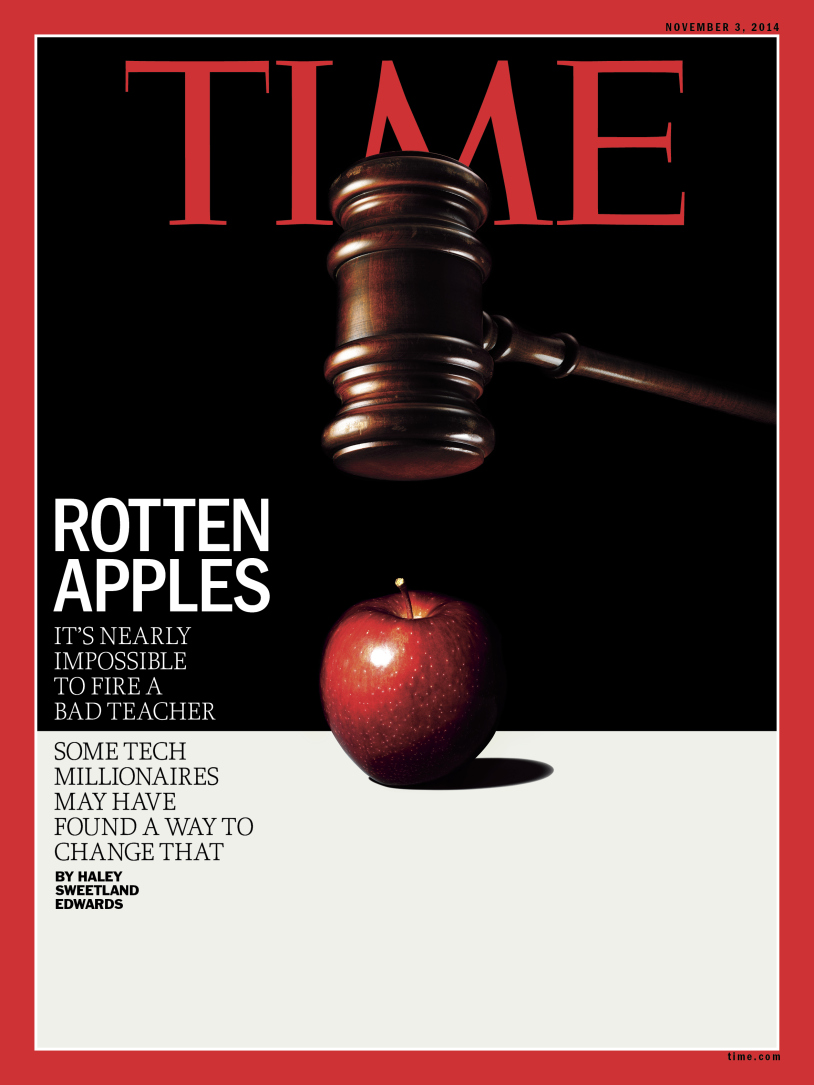
This is one part of a series of posts of readers’ responses to this week’s cover.
On Saturday afternoon as I sat in Starbucks with a former student of mine, assisting her with one of her college essays, I kept thinking, “I wish I was still her teacher.” I am no longer this bright young woman’s teacher, however because I was laid off from the high school she currently attends.
Reading TIME’s November 3rd cover story brought me back to that layoff. I was standing in the principal’s office being told I had done a great job while simultaneously being handed a Reduction In Force notice. The same principal later wrote me a glowing recommendation letter. It was clear she wanted to keep me but had been left no choice but to let me go.
For five more years it was more of the same. I worked tirelessly to innovate new programs, build literacy, raise test scores, and despite support from my students, their families, my administrators and colleagues, I was laid off every year due to my lack of seniority. While I was called back at the end of each summer, that notice was always a harsh reminder that my work with students actually didn’t matter. And, eventually, the uncertainty became too much and I decided to teach at a charter high school, where my work rather than my date of hire would be valued.
In economically disadvantaged neighborhoods, like the ones where I’ve always taught, an energetic, enthusiastic, dedicated teacher makes a world of difference. Multiple studies have shown that teacher quality is the number one in-school determinant of educational effectiveness. Quality teachers are the foundation of a quality education. Yet, year after I year, I saw the best teachers laid off and saw my union turn a blind eye to me and other teachers most in need of their representation.
While TIME correctly points out that entrepreneurs like David Welch have funded the reform effort, parents, students and their teachers have really been the spear tip of this movement. And, they were driven to take action by an immovable state legislature that has accepted the status quo for far too long.
This movement’s sole purpose is to create educational equality for the most underserved children in our state. Why shouldn’t David Welch, Bill Gates and others want to restore the same kind of quality public education they received, which helped them become the economic and technological leaders they are today? Why shouldn’t my former student expect the same?
She should have those expectations—all students should. She should expect a modern system, based on research and best practices that elevates teacher quality, raises the prestige of the teaching profession, and promotes access to a quality education. Such an education should not only be available to students lucky enough to win a lottery and attend a high performing charter school, like the one where I currently teach. That pathway to prosperity should be open to every child, in every school.
In search of more perspectives on TIME’s cover?
Randi Weingarten, President of the American Federation of Teachers, responds here.
Rep. George Miller (D-Calif.), Senior Democrat on the House Education and the Workforce Committee, responds here.
Courtney Brousseau, a high school senior from Thousand Oaks, Calif., responds here.
Lily Eskelsen García, President of the National Education Association, responds here.
Billy Easton, the Executive Director of the Alliance for Quality Education, responds here.
Gary Bloom, former Santa Cruz City Schools Superintendent, responds here.
Educators from the Badass Teachers Association respond here.
Stuart Chaifetz, a New Jersey parent, responds here.
More Must-Reads from TIME
- Donald Trump Is TIME's 2024 Person of the Year
- Why We Chose Trump as Person of the Year
- Is Intermittent Fasting Good or Bad for You?
- The 100 Must-Read Books of 2024
- The 20 Best Christmas TV Episodes
- Column: If Optimism Feels Ridiculous Now, Try Hope
- The Future of Climate Action Is Trade Policy
- Merle Bombardieri Is Helping People Make the Baby Decision
Contact us at letters@time.com